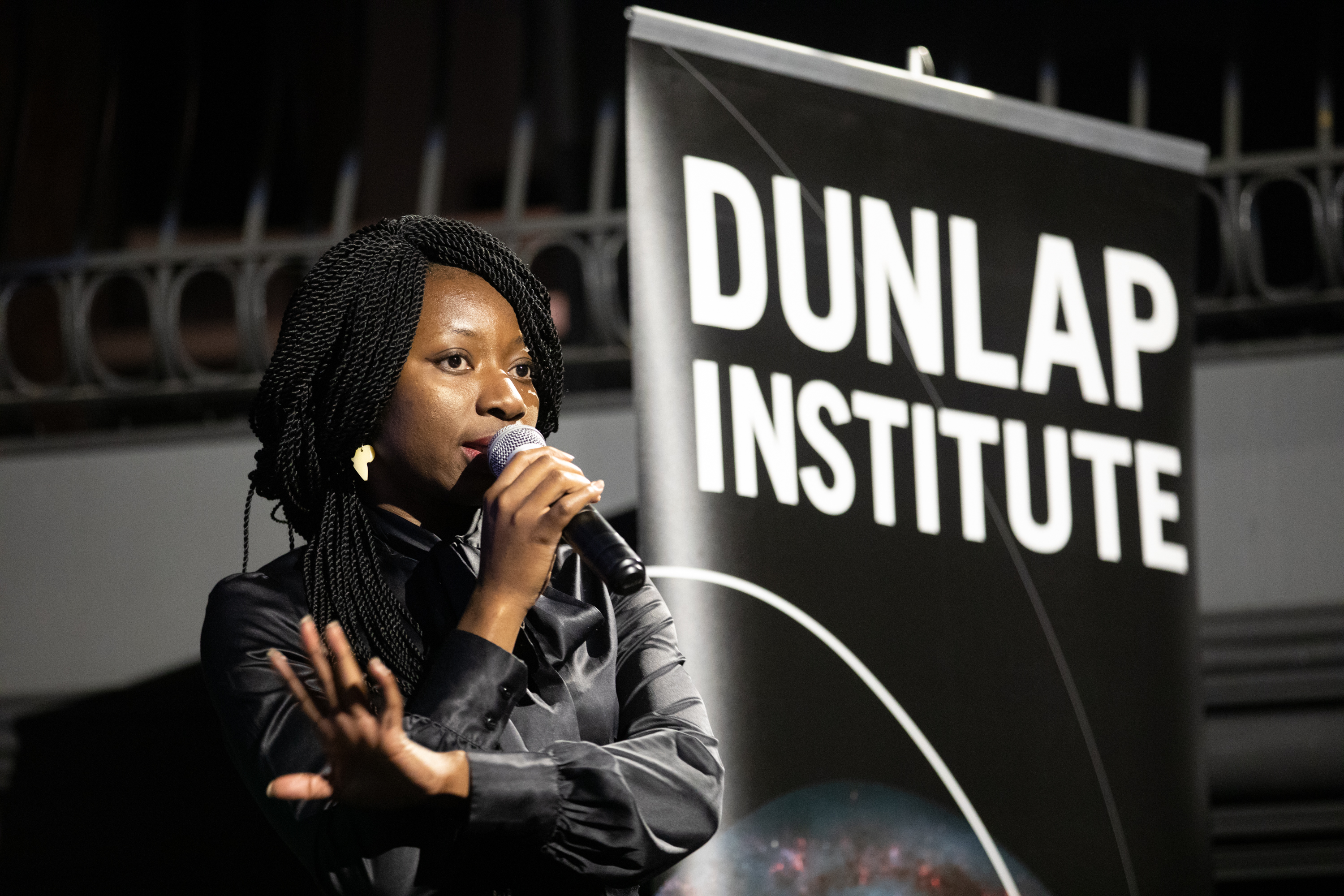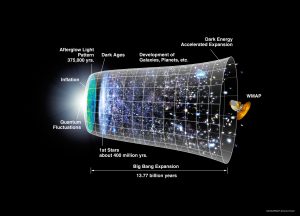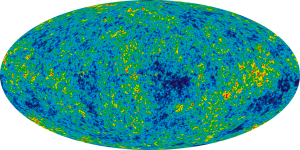
“When I was really young, I saw a shooting star. And that got me looking up at the night sky a lot more,” remembers Margaret Ikape, a PhD candidate at the Dunlap Institute and the David A. Dunlap Department of Astronomy & Astrophysics.
As a child, Ikape had a prime view of the stars from her hometown of Lagos, Nigeria. It inspired a lifetime of curiosity and the kinds of questions that kids are so good at asking.
She remembers thinking: “Can I count all the stars? Can I really go to a star? What would it be like if I could really go to a star? How long would it take?”
Ikape is still looking at the stars with that same curiosity, but at ones that are much, much further away. She is working to tell the story of the very first stars in our Universe, and how they have influenced everything that followed.
“A black box in astronomy knowledge”

A representation of the evolution of the universe over 13.77 billion years. Credit: NASA / WMAP Science Team.
Theory predicts that the ultraviolet light from the first stars was so powerful that it ionized—or split—some of the first hydrogen atoms back into protons and electrons. This period of cosmic history is known as the Epoch of Reionization (EoR). During this time, the first stars and galaxies began to form, and with them, the universe as we know it today.
Ikape is working to determine the properties of these first stars, like how big they were, and how long reionization itself took.
“That period is like a black box in astronomy knowledge. We know it happened, because the universe is ionized today, but we don’t know many details about it,” Ikape says.
Current optical telescopes cannot see back far enough to capture the EoR, so Ikape uses thousands of computer simulations to reimagine it and test various theories in a kind of virtual sandbox shaped by what we know of the universe. Some of these simulations require significant processing power and must be run through the “Helen” computing cluster, named after renowned Canadian astronomer Helen Sawyer Hogg. Each takes approximately 20 minutes to complete.

A nine-year Wilkinson Microwave Anisotropy Probe (WMAP) heat map of temperature fluctuations in the CMB. Credit: NASA/WMAP.
Ikape also learns about the EoR by studying the first light emitted in the universe, the Cosmic Microwave Background (CMB). As the light from the CMB travels to Earth, it passes through all that is between us and the point in cosmic history at which the CMB was emitted approximately 380,000 years after the Big Bang. Ikape can isolate how light from the CMB was impacted by the EoR and analyze it to tell us more about this time.
This work can be challenging and filled with more questions than answers, but the excitement of uncovering something that might change how we understand the universe keeps Ikape inspired.
“Margaret’s work connects models and simulations of how the first stars in the universe lit up and ionized the surrounding gas with our observations of the cosmic microwave light—so she is the detective piecing the story together,” says Professor Renée Hložek, Ikape’s PhD supervisor.
Ikape has forecasted that a new generation of telescopes will unlock more details about this mysterious period and the universe’s first stars, including the Simons Observatory and the fourth-generation ground-based cosmic microwave background experiment, or CMB-S4. She co-authored research that predicts that the CMB-S4 will help scientists close-in on when the EoR began and how long it lasted.
Reaching out
Back down on Earth, Ikape is especially proud of the outreach initiatives she is involved in.
She is an instructor with the Pan-African School for Emerging Astronomers (PASEA), a bi-annual school for emerging astronomers in Africa. In 2022, Ikape participated in the first pan-African school in Zambia. PASEA aims to introduce undergraduate students in astronomy to research practices and what to expect if they choose to pursue a career in the field.
In Toronto, Ikape was recently a speaker as Astronomy on Tap T.O. and has delivered presentations about astronomy at libraries, high schools, and even at a long-term care home.
“We are lucky to have students like Margaret at the Dunlap Institute; she combines her scientific curiosity with a passion for sharing what she learns with the broader community and training the next generation of bright minds,” Hložek says.
“The universe fascinates me a lot and I’m super excited every time I think about it. So I think that everybody should know about it,” Ikape says.
